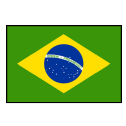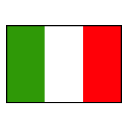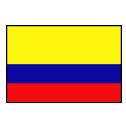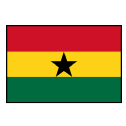The 2017 FIFA Under-17 World Cup in India begins in exactly 100 days, and is the biggest platform for young players to make themselves heard.
Several players who first made a mark in the Under-17 World Cup went on enjoy illustrious careers in the sport, winning the biggest trophies and accolades for club and country. Here are 11 of the best.

Where he began:
The 1997 Under-17 World Cup in Egypt, with Spain running out 3-2 winners against Mexico.
What happened next:
Xavi did not lift the Under-17 World Cup that year, but he would compensate by only becoming one of the most decorated players in the history of the game -- the heartbeat of the Spain and Barcelona teams that dominated club and international football for several years.
An embodiment of the Tiki-Taka style of play, Xavi widely became renowned as the game's most incisive passer, and finished third in the FIFA Ballon D'or in three consecutive years, between 2009 and 2011. He would end his career with eight La Liga titles, four Champions Leagues, two European Championships, and the FIFA World Cup.

Where he began:
A 2-1 victory against Oman in the 2001 Under-17 World Cup in Trinidad & Tobago.
What happened next:
Torres started his club career at Atletico Madrid and earned a reputation as one of the most lethal finishers in Europe. It earned him a 2007 transfer to Liverpool, where he scored 81 goals in just 142 games. A record-breaking $50 million move to Chelsea materialised in 2011, and though Torres blew hot and cold during his time in London, he would pick up the biggest club trophy in 2012: the Champions League.
Torres also enjoyed a stellar international career, scoring the winner in the 2008 European Championships final against Germany, as well as in a 4-0 rout of Italy in the 2012 final. In 2008, he finished in third place in the Ballon D'Or, behind Cristiano Ronaldo and Lionel Messi.

Where he began:
The 1997 Under-17 World Cup in Egypt, with Ronaldinho scoring in a 7-0 thrashing of Austria.
What happened next:
One of the hottest prospects in world football ever since being a teenager, Ronaldinho played a key role in Brazil's World Cup win in 2002. His undisputed talent and dribbling skills attracted the attention of Barcelona in 2003, where he cemented his place as one of the best players in the world. He was named FIFA World Player of the Year in both 2004 as well as 2005, picking up a host of other individual and team honours along the way, including a Champions League winner's medal in 2006.

Where he began:
The 1993 Under-17 World Cup in Japan, scoring Italy's only goal of the tournament in a 2-1 defeat to Mexico.
What happened next:
Totti spent his entire career at AS Roma, becoming the club's most capped player and top goal scorer. Renowned for his vision and playmaking ability, Totti aged like fine wine, playing an important role in Italy's World Cup triumph in 2006, eventually named in the official team of the tournament. With 316 goals, he is the fifth-highest Italian scorer in all competitions, and won the European Golden Shoe award in 2007.

Where he began:
Like Totti, Buffon was part of Italy's squad for the Under-17 World Cup in Japan.
What happened next:
Widely considered to be one of the greatest goalkeepers of all time, Buffon became Italy's most-capped player, the fifth-most capped male international player, and the most capped European international player ever. He holds the record for the longest streak without conceding a goal in Serie A history, going 974 minutes without letting in a goal for Juventus in 2015-16.
Buffon's greatest moment came in Italian colours in the 2006 World Cup, as he produced 40 saves and conceded just two goals through the tournament in Germany, eventually helping his team beat France on penalties in the final. He finished second in the 2006 Ballon D'Or, behind his captain Fabio Cannavarro.

Where he began:
The 1997 Under-17 World Cup in Egypt, where he was the youngest player in the Spain squad which finished third.
What happened next:
Casillas spent 16 highly successful years at Real Madrid, winning five La Liga titles and three Champions Leagues. He became the club's second-most capped player of all time after Raul Gonzalez, eventually taking over as captain of the team.
Casillas became Spain's first-choice keeper in 2002, and played a vital role in goal during the team's successful run between 2008 and 2012, producing crucial reflex saves in crunch moments such as denying Arjen Robben one-on-one in the 2010 World Cup final, where Spain lifted the sport's highest honour for the first time in history with Casillas wearing the captain's armband.

Where he began:
The 2009 Under-17 World Cup in Nigeria, scoring in Brazil's 3-2 win against Japan in the opening game.
What happened next:
His style, flair and impressive goal-scoring record meant it wasn't long before Neymar began getting compared to Brazilian legend Pele. Since moving to Barcelona from Santos in 2013, Neymar's talents have only shone brighter on a bigger stage, as he helped the team to two La Liga titles, and the Champions League in 2015.
Neymar has been equally prolific for Brazil since making his senior debut in 2010, scoring 52 goals from 77 matches. He was also the key figure behind the teams that won the Confederations Cup in 2013, and the Olympic gold medal in 2016.

Where he began:
The 2001 Under-17 World Cup in Trinidad & Tobago, where he scored two goals for Argentina.
What happened next:
Tevez's pace and work-rate quickly caught the eye of several big clubs, including Manchester United, who signed him in 2007. Tevez chipped in with plenty of key goals, helping the team win two consecutive Premier League titles, and also the Champions League in 2008. Since leaving United, Tevez has also won league and cup titles with Manchester City and Juventus.
He played in two World Cups for Argentina, and was part of the squad that nabbed the gold medal during the 2004 Olympics in Greece.

Where he began:
The 2003 Under-17 World Cup in Finland, where he finished as the top scorer with five goals, despite playing in midfield.
What happened next:
Fabregas established himself in Arsenal's starting XI in the 2004-05 season, and quickly became one of the league's best playmakers with his vision and incisive passing. In 2008, he was named the PFA Young Player of the Year. After leaving Arsenal in 2011, he went on to win league titles with both Barcelona and Chelsea.
Despite a tough competition for places, Fabregas also regularly features for Spain, and provided the assist for Andres Iniesta's winner in the 2010 World Cup final.

Where he began:
The 2007 Under-17 World Cup in South Korea, where he helped Colombia advance to the knockouts.
What happened next:
After making a name for himself with impressive performances for Porto and Monaco, James announced himself at the biggest stage during the 2014 World Cup in Brazil. He ended the tournament as the top scorer with six goals, including a volley against Uruguay in the round of 16 which won him the FIFA Puskas Award.
His stint with Colombia at the World Cup earned him a big-money move to Real Madrid, where he added the La Liga as well as two Champions League titles to his young but already trophy-laden career.

Where he began:
Kuffour was an integral part of the Ghana team that won the 1991 Under-17 World Cup at the age of 15, and would return two years later to the side that finished runners-up to Nigeria in the same event.
What happened next:
Sandwiched between the two Under-17 World Cup appearances for the defender, were the 1992 Olympics in Barcelona, where Kuffour became the youngest medallist in the sport when picking up a bronze with Ghana while still a few days shy of 16. A year later, Ghana would win silver behind Brazil at the Under-20 World Cup, and Kuffour would feature in that squad as well, picking up four medals in international competitions before even having made his full debut in Ghana colours.
Kuffour also enjoyed a long club career with Bayern Munich, featuring in teams that picked up six Bundesliga titles and the UEFA Champions League in 2001, a well-deserved title after featuring in the defence during the 1999 final meltdown against Manchester United. Kuffour would finish his international career with the 2006 World Cup in Germany, and was named among the top 30 African players of all time in 2007.
